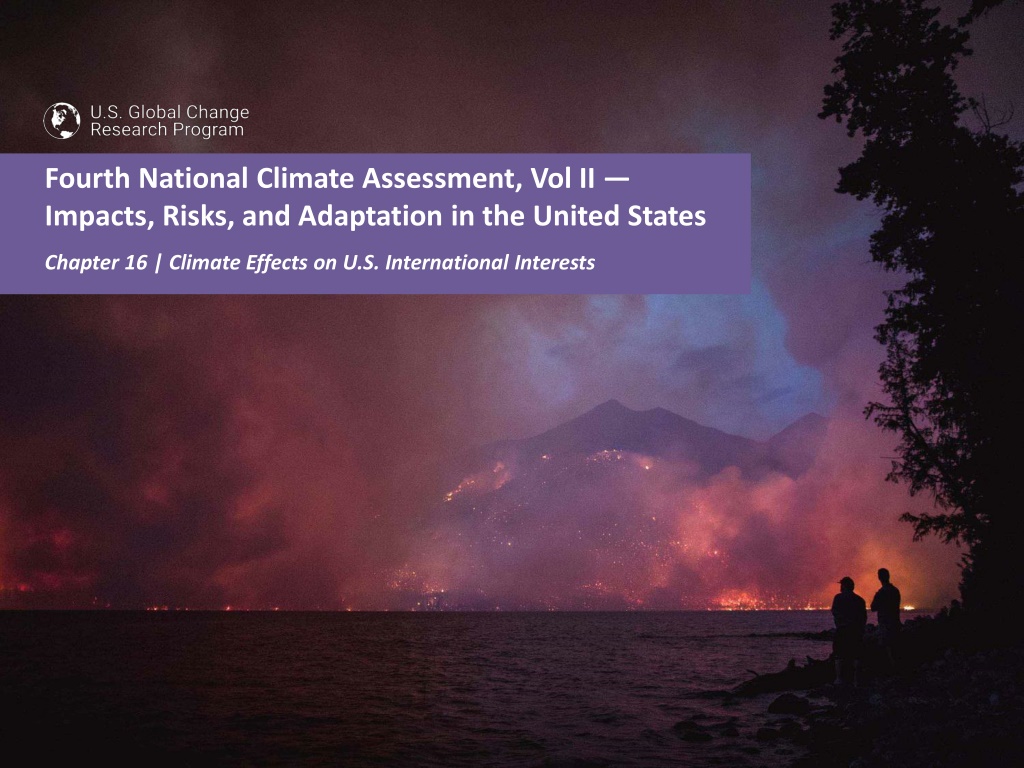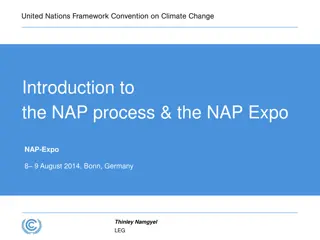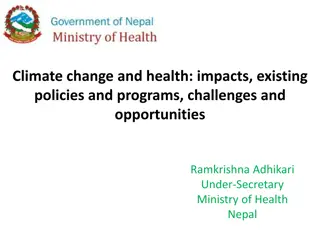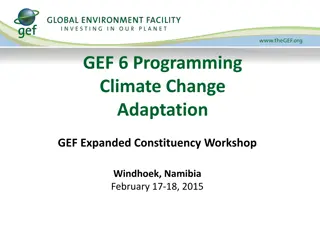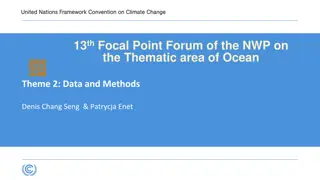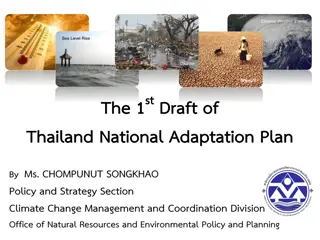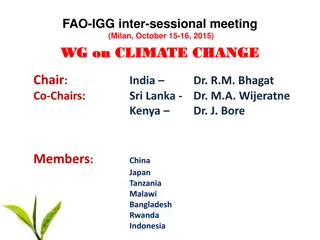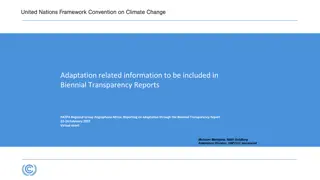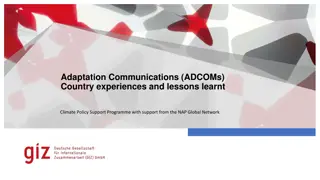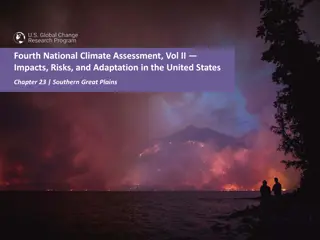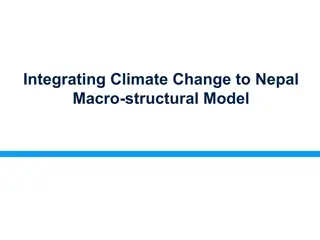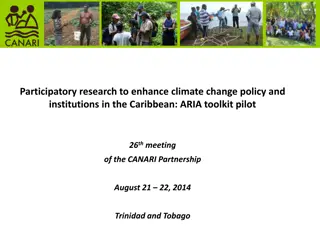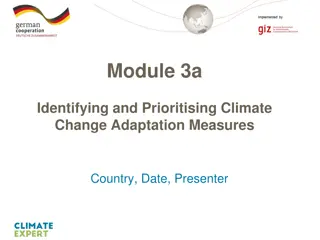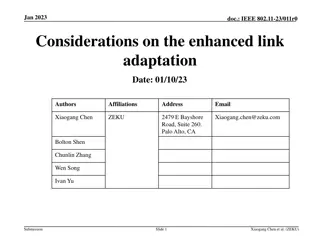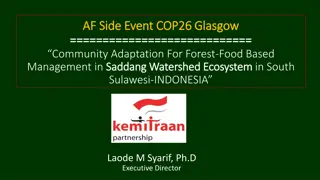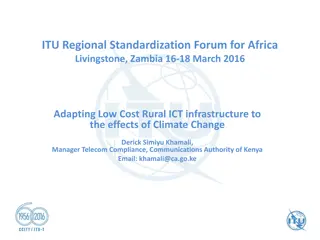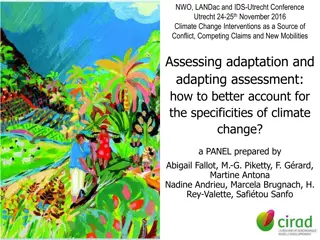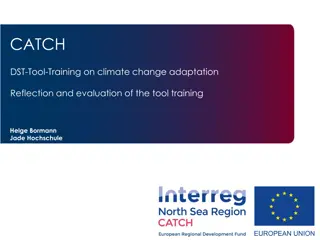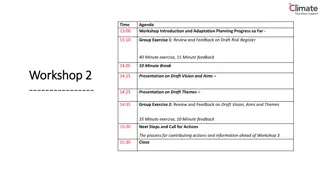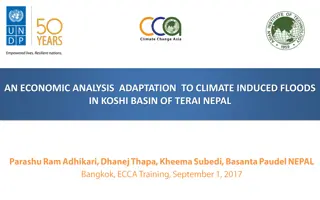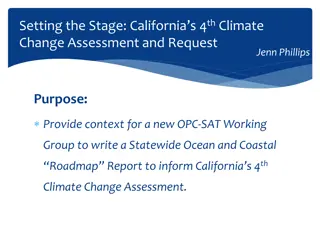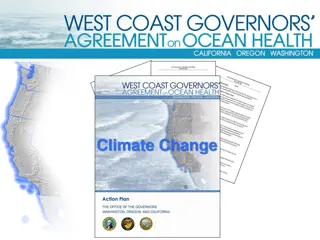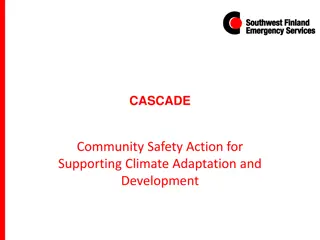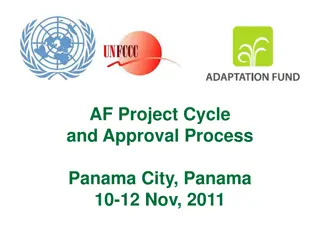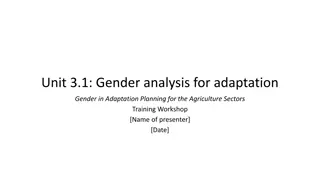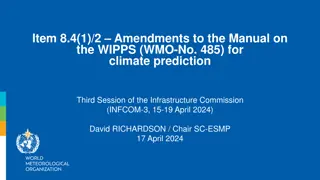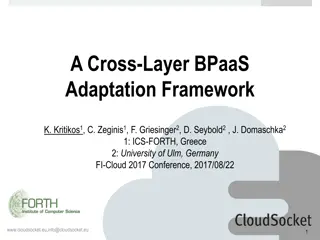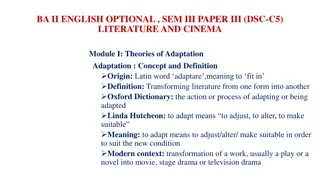Climate Effects on U.S. International Interests: Impacts and Adaptation
The Fourth National Climate Assessment reveals how climate change, variability, and extreme events impact U.S. international interests. This includes effects on the economy, trade, international development, humanitarian assistance, national security, and shared transboundary resources. The report highlights the urgent need for addressing climate risks to safeguard global stability and prosperity.
Download Presentation

Please find below an Image/Link to download the presentation.
The content on the website is provided AS IS for your information and personal use only. It may not be sold, licensed, or shared on other websites without obtaining consent from the author. Download presentation by click this link. If you encounter any issues during the download, it is possible that the publisher has removed the file from their server.
E N D
Presentation Transcript
Fourth National Climate Assessment, Vol II Impacts, Risks, and Adaptation in the United States Chapter 16 | Climate Effects on U.S. International Interests Fourth National Climate Assessment, Vol II Impacts, Risks, and Adaptation in the United States nca2018.globalchange.gov 1
Ch. 16 | Climate Effects on U.S. International Interests Key Message #1 16 Economics and Trade The impacts of climate change, variability, and extreme events outside the United States are affecting and are virtually certain to increasingly affect U.S. trade and economy, including import and export prices and businesses with overseas operations and supply chains. Fourth National Climate Assessment, Vol II Impacts, Risks, and Adaptation in the United States nca2018.globalchange.gov 2
Ch. 16 | Climate Effects on U.S. International Interests Key Message #2 16 International Development and Humanitarian Assistance The impacts of climate change, variability, and extreme events can slow or reverse social and economic progress in developing countries, thus undermining international aid and investments made by the United States and increasing the need for humanitarian assistance and disaster relief. The United States provides technical and financial support to help developing countries better anticipate and address the impacts of climate change, variability, and extreme events. Fourth National Climate Assessment, Vol II Impacts, Risks, and Adaptation in the United States nca2018.globalchange.gov 3
Ch. 16 | Climate Effects on U.S. International Interests Key Message #3 16 Climate and National Security Climate change, variability, and extreme events, in conjunction with other factors, can exacerbate conflict, which has implications for U.S. national security. Climate impacts already affect U.S. military infrastructure, and the U.S. military is incorporating climate risks in its planning. Fourth National Climate Assessment, Vol II Impacts, Risks, and Adaptation in the United States nca2018.globalchange.gov 4
Ch. 16 | Climate Effects on U.S. International Interests Key Message #4 16 Transboundary Resources Shared resources along U.S. land and maritime borders provide direct benefits to Americans and are vulnerable to impacts from a changing climate, variability, and extremes. Multinational frameworks that manage shared resources are increasingly incorporating climate risk in their transboundary decision-making processes. Fourth National Climate Assessment, Vol II Impacts, Risks, and Adaptation in the United States nca2018.globalchange.gov 5
Ch. 16 | Climate Effects on U.S. International Interests Fig. 16.1: Impact of 2011 Thailand Flooding on U.S. Business Interests Severe flooding in Thailand in 2011 created significant disruptions of local business operations and global supply chains, resulting in a range of impacts to U.S. business interests. Source: ICF. Fourth National Climate Assessment, Vol II Impacts, Risks, and Adaptation in the United States nca2018.globalchange.gov 6
Ch. 16 | Climate Effects on U.S. International Interests Fig. 16.2: Famine Early Warning Systems Network The Famine Early Warning Systems Network involves a collaboration between U.S. government agencies, other national government ministries, and international partners to collect data and produce analyses of conditions in food-insecure regions and countries. The analyses integrate information on climate, agricultural production, prices, trade, nutrition, and other societal factors to develop scenarios of food security around the world 6 to 12 months in advance. This map shows projections of peak populations in need of emergency food assistance in 2018. Source: adapted from USAID 2018.58 Fourth National Climate Assessment, Vol II Impacts, Risks, and Adaptation in the United States nca2018.globalchange.gov 7
Ch. 16 | Climate Effects on U.S. International Interests Fig. 16.3: U.S. Military Relief Efforts in Response to Typhoon Haiyan The U.S. military conducted humanitarian and disaster relief efforts in the aftermath of Typhoon Haiyan in the Philippines in 2013. (upper left) An officer aboard an MH- 60R Seahawk helicopter prepares to drop off humanitarian supplies. (upper right) A sailor assists a Philippine nurse in treating a patient's head wound at the Immaculate Conception School refugee camp. (lower left) Residents displaced by the storm fill the cargo hold of a C-17 Globemaster aircraft. (lower right) Sailors aboard the aircraft carrier USS George Washington move a pallet of drinking water across the flight deck. Photo credit: U.S. Department of Defense. Fourth National Climate Assessment, Vol II Impacts, Risks, and Adaptation in the United States nca2018.globalchange.gov 8
Ch. 16 | Climate Effects on U.S. International Interests Fig. 16.4: Transboundary Climate-Related Impacts Shown here are examples of climate-related impacts spanning U.S. national borders. (left) The North American Drought Monitor map for June 2011 shows drought conditions along the US Mexico border. Darker colors indicate greater intensity of drought (the letters A and H indicate agricultural and hydrological drought, respectively). (right) Smoke from Canadian wildfires in 2017 was detected by satellite sensors built to detect aerosols in the atmosphere. The darker orange areas indicate higher concentrations of smoke and hazy conditions moving south from British Columbia to the United States. Sources: (left) adapted from NOAA 2018,114(right) adapted from NOAA 2018.115 Fourth National Climate Assessment, Vol II Impacts, Risks, and Adaptation in the United States nca2018.globalchange.gov 9
Ch. 16 | Climate Effects on U.S. International Interests Chapter Author Team 16 Institute for Climate and Society, Columbia University Kurt Preston, U.S. Department of Defense Peter Schultz, ICF Lisa Vaughan, National Oceanic and Atmospheric Administration Review Editor Diana Liverman, University of Arizona Federal Coordinating Lead Author Meredith Muth, National Oceanic and Atmospheric Administration Chapter Lead Joel B. Smith, Abt Associates Chapter Authors Alice Alpert, U.S. Department of State James L. Buizer, University of Arizona Jonathan Cook, U.S. Agency for International Development Apurva Dave, U.S. Global Change Research Program/ICF John Furlow, International Research Fourth National Climate Assessment, Vol II Impacts, Risks, and Adaptation in the United States nca2018.globalchange.gov 10
Ch. 16 | Climate Effects on U.S. International Interests Acknowledgments 16 USGCRP Coordinator Apurva Dave, International Coordinator and Senior Analyst Fourth National Climate Assessment, Vol II Impacts, Risks, and Adaptation in the United States nca2018.globalchange.gov 11
Recommended chapter citation Smith, J.B., M. Muth, A. Alpert, J.L. Buizer, J. Cook, A. Dave, J. Furlow, K. Preston, P. Schultz, and L. Vaughan, 2018: Climate Effects on U.S. International Interests. In Impacts, Risks, and Adaptation in the United States: Fourth National Climate Assessment, Volume II [Reidmiller, D.R., C.W. Avery, D.R. Easterling, K.E. Kunkel, K.L.M. Lewis, T.K. Maycock, and B.C. Stewart (eds.)]. U.S. Global Change Research Program, Washington, DC, USA. doi: 10.7930/NCA4.2018.CH16 Read the full chapter https://nca2018.globalchange.gov/chapter/international nca2018.globalchange.gov Fourth National Climate Assessment, Vol II Impacts, Risks, and Adaptation in the United States nca2018.globalchange.gov 12
